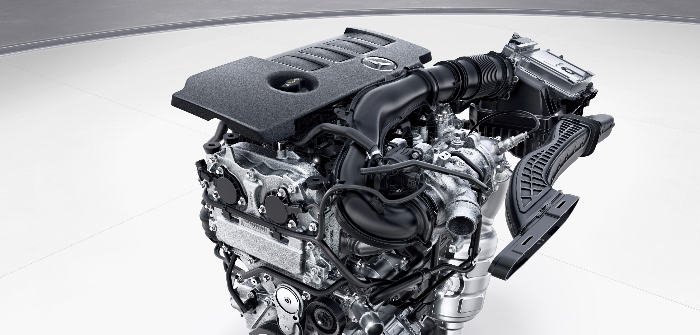Seven years after Daimler announced its small-vehicle partnership with the Renault-Nissan Alliance, Mercedes-Benz has unveiled its 2018 A-Class. With two of the three engine variants co-produced by the three OEMs, the new hatchback points toward a deepening relationship.
In April 2010 Daimler declared an alliance with Renault-Nissan, formed to exchange capital and technology during an economic slump. The companies agreed to work on developing new small cars and engines.
Five years later, CEO of the Alliance Carlos Ghosn described the partnership as “one of the most productive in the automotive industry”. Now, the UK’s best-selling Mercedes-Benz model, the A-Class, will use two four-cylinder Renault-Nissan motors.
Unveiled at a special event in Amsterdam in the Netherlands on Feb 2, the fourth-generation A-Class will offer a choice of two gasoline motors and a diesel at launch at the Geneva motor show in March.
Fitted with a 1.4-liter Renault-Nissan engine, the A200 promises 165ps and 250Nm of torque. Combined with the 7G dual clutch transmission (DCT), it is expected to achieve 5.1 l/100km and combined CO₂ emissions of 120g/km. The six-speed manual transmission will offer 5.6 l/100km and produce 133g/km of CO₂.
The A250 features a recently updated 2.0-liter unit and is also bolted to a 7G-DCT. The OEM promises 227ps and 350Nm of torque, all while consuming 6 l/100km and producing combined CO₂ emissions of 141g/km.
In another collaborative move with Renault-Nissan, the A180d has another Alliance-developed motor. The 1.5-liter diesel with AdBlue technology and a 7G-DCT promises 116ps and 260Nm of torque. Combined fuel consumption and CO₂ emissions are 4.1 l/100km and 108g/km respectively.
With Daimler and Renault-Nissan’s technologies becoming more and more intertwined, the A-Class hints at greater collaboration in future vehicles.


